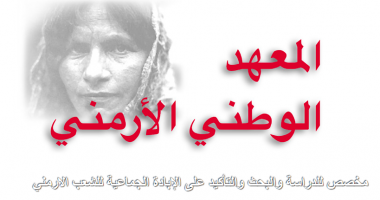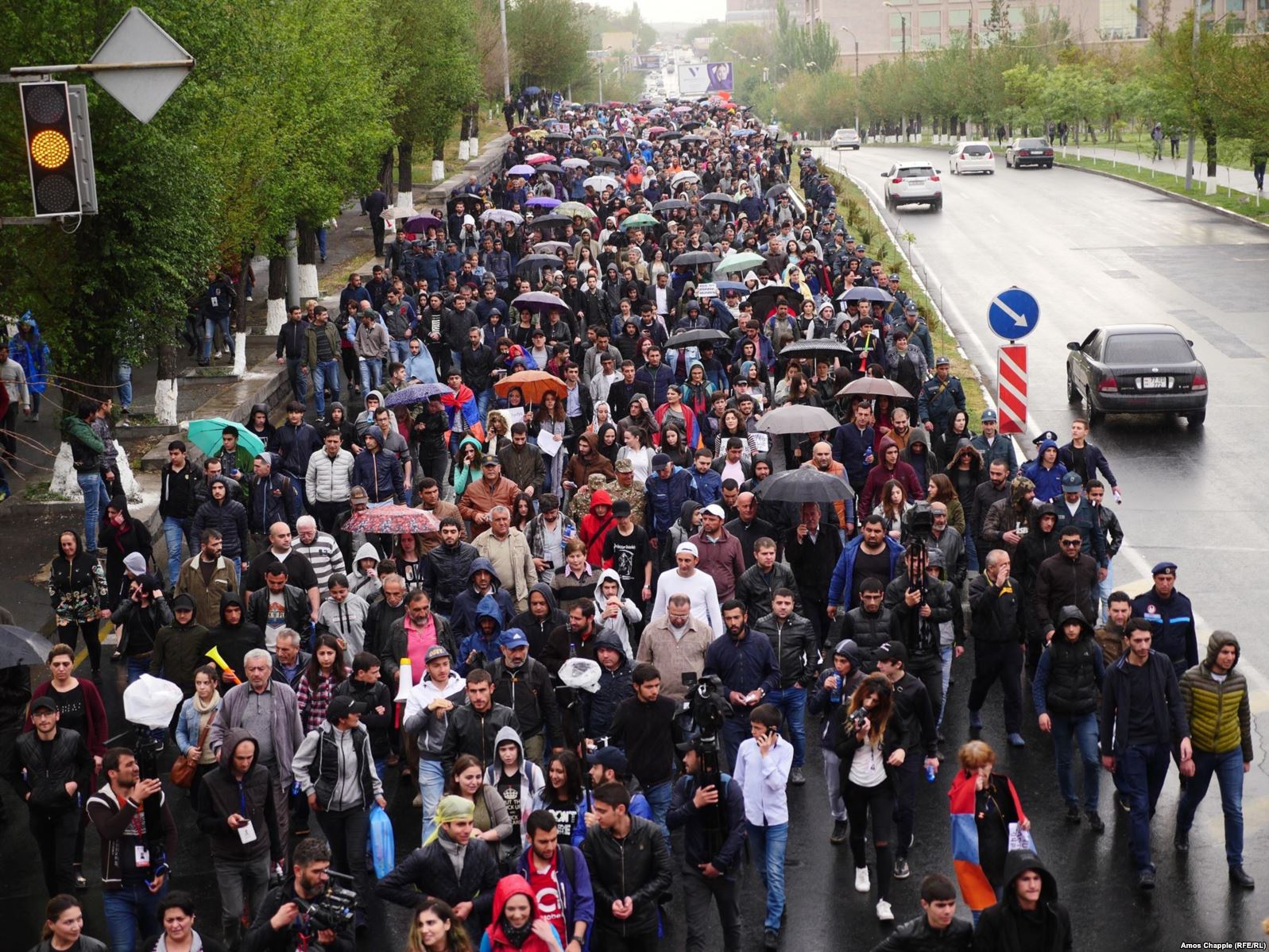

The following article was published in the Turkish daily Radikal, on 24 April 2012. It was written by Pinar Ogunc, who accompanied historian Ara Sarafian on a trip to Ayash, on the trail of around 85 Armenian political prisoners who were sent there following the arrests in Constantinople on 24 April 1915. According to Sarafian, 70 of these prisoners were killed in the following few months. His trip was part of a broader project examining these arrests and the ultimate fate of the prisoners concerned.
BY Pinar Ogunc
(Radikal, 24 April 2012)
Everything started on that train departing from Haydarpasa on April 24th, 1915. With Ara Sarafian, we followed the prisoners, a few of whom survived and wrote their memoirs. We looked at Ayash through the eyes of these survivors.
“If Talat bey knew what disasters and bereavement we have faced as a family, he would end this situation… My poor wife, you have suffered so much misery because of this tyranny, and now, as a result lost your sight, what police chief would not show pity on you after seeing your condition? But what is the use? Our suffering will always remain with us.” (Teotig, Monument of April 11)
Smpad Piurad, an Armenian writer and educator, was on that same train departing from Haydarpasha on April 24th, 1915. He did not have the slightest idea of his doom while heading to the town of Ayash (Ankara province) with a group of people, most of whom were Armenian writers, poets, and journalists. This letter, written to his wife in mid-June, was the last one he wrote.
What happened in 1915? Almost a century later, one still waits for time to cover up the past. As the years go by, we know less about what was done to Armenians in 1915. Those who could easily talk on the issue in the first years of the Turkish republic have remained silent. Because we knew less than we should, we surrendered to a blind stubborness by way of daily political games. Something precious was taken away from the Turkish nation. We forgot to feel the pain of others. Everything was locked away in the word “genocide”, all efforts directed to decrease the number of Armenians who embarrassingly lost their lives. Have we come down to 300 thousand from 800 thousand victims? Even so, where is the pain and shame even if 300 thousand perished?
So many things are discussed but there is no denial of the official historical view related to those Armenians who were arrested and forced onto the train departing from Haydarpasha in 1915. We now know a great deal more about these deportees because of an article, “What Happened in April 24th, 1915?” written in 2008 by the former General Director of State Archives, Yusuf Sarinay, who has since been appointed to the Undersecretariat of the Prime Ministry at the beginning of this year. While denying the ultimate fate of the deportees, Sarinay gave a long list of the men who were sent to Ayash.
Ara Sarafian is a well-known historian in Turkey. His mother’s side is from Harput, and his father’s side from Tavshanli (Kutahya). Sarafian, the director of the Gomidas Institute (London), says that he feels himself to be from Harput. That’s why, he adds, he addresses the Turkish Government, and not the Armenia one, in my work. He hopes the Gomidas Institute will soon open a branch in Turkey.
Sarafian is also different for other reasons. Why? Because we are on our way to Ayash in April, 2012. “Diaspora Armenians are afraid. They think they will not be left in peace if they come to Turkey. Some of them even think they will be killed. I want to show that one can take the plane to Ankara, rent a car, and drive to Ayash.”
Two Enlightening Memoirs
Sarafian is being accompanied by documentary filmmaker Gagik Karagheuzian. They have worked together for years. Karagheuzian, whose father fled to Iran after his own father was killed, has an Iranian mother. Since very little is known of his family’s experiences, what he knows about his family history comes from books and other sources. Sarafian tells Karagheuzian who Sabiha Gokcen was while boarding the aircraft departing from Sabiha Gokcen Airport. This is how the day starts. When we land, Sarafian will drive directly to Ayash, without the need for a map.
What will we find in Ayash? The April 24 [1915 ] train stopped at Sindjankoy [Sincanköy]. The Ayash prisoners were separated from the Chankiri prisoners. According to Sarafian, the total number of prisoners was around 220, Sarinay states 235.
Around 15 of the 80-85 prisoners taken to Ayash were eventually released because they were not very political. The remaining 71 were alleged conspirators against the state, mostly suoporters of the Tashnagtsoutiun. “However, these were political charges.” Sarafian states, “The Tashnags were a legal party. In the 1908 revolution, they were on the same side as the Union and Progress Party!”
We have the memoirs of prisoners who were released, some published as early as 1919. One memoir was written by Dr. Avedis Nakashian, and the other by Piuzant Bozadjian, a nephew of a well known writer and publisher known as Teotig. They described where the prison was, what life was like inside, and what happened then. With such notes in our hands, we arrive at Ayash, as the car descends a hill.
There are some holy graves if you want
According to the information we have, the prison was 50 yards away from the Government Office. There should have been a cemetary nearby. As we get out of the car, Sarafian looks serous as he reads the name of the historical hamam located nearby. According to the memoirs, this was where the prisoners were brought from the prison to bathe. When we get closer to the white moustached old man at the town square, two others join us. We ask about the old government building and he shows a yellow building nearby. “A fire broke out in the 70’s. It was rebuilt and is now a hospital,” says the old man. He also gives us some advice, “eat some of the local stew before you leave,” “definitely buy sudjuk, it is much better than Kayseri sudjuk.”
There is a lot of restoration going on for tourism. The historical Ankara houses with their bay windows are being turned into boutique hotels or summer houses. When we reach the hospital, which was formerly the government house, two roads appear before us…. We take one and ask an old lady we see in her garden if she knows of an old cemetery nearby. She gives the names of several holy graves. Ayash is a paradise of holy graves. Just think of it, there is even a grave called Soil Father for children who eat soil! A moment later, the woman mentions the cemetery, which just a couple of yards up the road. Perhaps the prison was located where their house is located now. The other possibility is on the other road nearby.
“Peace at home”
The official Turkish view claims that the Ayash prisoners were held there until end of World War I and then released. But Sarafian says that there was no communiction from the prisoners after the summer of 1915 and no trace of them have been found since. Hampartsum Boyadjian (Mourad), a former revolutionary against Abdul-Hamid and a member of the Ottoman parliament, was one of the few who were supposedly tried by a court-martial (and executed). Another group of Ayash prisoners were sent to a court martial in Diyarbakir but never reached that city. They disappeared and were reportedly killed. According to Sarafian, a large group of the remaining Ayash prisoners were sent to Ankara and deported with other Armenians. They too disappeared, while yet another group of around 25 prisoners, were massacred at Ayash Beli, nearby. This is how Nakashian was informed by a Turkish notable about these murders. The prisoners were tied together, marched for two hours, and killed at Ayash Beli. But Sarafian is unable to provide additional evidence. However, on his way back, he finds Ayash Beli (which is not on the map), jumps out of the car, not caring for the sudden rain, and looks at the horizon to take pictures. He thinks he might be amongst the few Armenians who have come to Ayash for almost a century.
While counting his steps in Ayash, in order to locate the prison, something happened which I may say “the director has exaggerated” if I had seen it in a movie. A municipality truck stopped by and the cheerful driver said, “You’re just in time. I will fly the flag now.” I then realised the distant flag post which seemed as if it were a kilometer tall. It was dangerous to fly the giant flag in such weather. Once, I was told, it flew across to the next hill. But it’s April 23rd and mandatory to fly it.
While hoisting the flag, the man shouted, “Don’t come closer, it’s very dangerous.” I waited near an Ataturk monument, where it said “…., peace in the world.” No one could climb five meters and erase the first part, “peace at home,” but it so has happened, somehow, on its own. Hmm…
“Let the legislators dispute, not the historians”
“I don’t think the Armenian diaspora is seriously interested in all this. Practically none have read Yusuf Sarinay’s article discussing and denying the fate of the prisoners who were sent here. There are too many talkers, but those professionals who actually read publications and documents in Turkish are no more than five or six people. I am often criticised because I engage such materials in spite of the official Turkish denialist position. But this is all part of my work. If we are going to make serious assertions about the Armenian Genocide, then we should listen to what is being said. As for the charge of ‘genocide’ and the assertion ‘Let’s leave the dispute to the historians,’ I say, ‘Leave it to the lawyers and judges.’ Personally, I use the term genocide because it describes the events of 1915. I have no problem sitting down with historians who do not call it genocide, as long they are sincere and engage in real discussions. The current dispute of whether it’s a genocide or not has turned into a game, and it wastes much time.”
Survivors Narrate
Sarafian translates some passages from the memoirs of Dr. Avedis Nakashian.
“The prison was was made of wood and measured 6 by 15 meters. There were some people like Kevork Mesrob who had been arrested instead of his son-in-law. It was not clear why an almost blind grocer from Pera, Haig Tiryakian, or the dog-catcher, Artin Asadourian had been brought there.
“We had to share our chores. Some prepared the fire, some did the cooking. We even gave special titles to some people. For example, Samuelov was the minister responsible for dishwashing. We had singing and poetry reading. There were famous poets like Siamanto and Levon Larents who had translated the Koran into Armenian. They were discussions about politics, life and the arts. The famous illustrator “Gigo” (Krikor Torosian) started drawing daily caricatures. He even thought about publishing them. It did not happen.” Gigo was killed like most of the other prisoners.
Nakashian wrote how they prepared a telegram to Talat Pasha stating that they were innocent and imploring for Talaat’s intercession. They argued about the use of the word “implore,” as some people thought it was too demeaning. In the meantime, news of massacre and executions had started to come from different places. This was when despair started.










